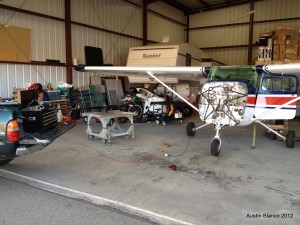
Back in mid December I had the unpleasant experience of a large bird flying through my prop. In the aftermath of this event I learned that my engine had to be inspected internally, to determine whether any internal components were damaged due to the incident. My engine was due for an overhaul anyway, so I opted to invest the extra money needed to completely overhaul the engine. In the process I added an engine analyzer and a 160hp STC, to get a little more performance out of the engine at altitude. It turned out that my current prop was damaged and unserviceable, so we replaced the prop with a new one. This project was time-critical, extremely complex, and I walked into it knowing that if I received components missing one critical little part, delays would rapidly accumulate. Throughout the project I got to work with some of the people that make aviators like me able to fly, and it was greatly to my benefit.
The Dreaded call to Insurance
When I had the prop strike I knew I needed to get in touch with my insurance carrier. I mentally prepared for the usual fight with insurance. With auto insurance it’s the same old game: Avoid responsibility, haggle on repair, haggle on shops, haggle on price, up your premiums after everything is done. The last thing I was prepared for was Bill Arnold of Arnold & Arnold Inc. After about 3 hours of leaving a message with my insurance agency, I receive a phone call from Bill. He leaves me his business number, and his cell number, and his home phone number, just so I could be sure get in touch. I spoke with him, expecting the usual runaround, what I got instead blew me away. 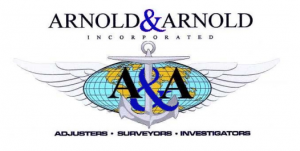 Bill’s #1 goal was to figure out a solution to my problem that provided the best safety for the future. His point was well taken, “We aren’t interested in turning a small claim into a larger one, or worse one, down the road.” We weren’t sure at the time whether an FAA-required engine inspection (i.e. teardown) applied to my situation. Bill pointed out that the insurer, Global Aerospace, would proceed with the engine teardown if, in the aftermath of the strike, I didn’t feel safe flying on the engine. This interest in my safety really changed my view of the insurer. Instead of battling out a tough ordeal, I had a partner to work with to solve this problem. Bill had a mutual interest in a safe outcome, what a thought! This approach motivated me to be fair with the insurer, and provide honest and fair quotes for the work to be performed. I think Bill’s approach saved me money, and saved the insurer money. Go figure! Ultimately Bill and I decided that the best way to determine if the teardown inspection applied to my situation was to have my prop inspected. But who could we find to do a thorough inspection the week before Christmas?
Bill’s #1 goal was to figure out a solution to my problem that provided the best safety for the future. His point was well taken, “We aren’t interested in turning a small claim into a larger one, or worse one, down the road.” We weren’t sure at the time whether an FAA-required engine inspection (i.e. teardown) applied to my situation. Bill pointed out that the insurer, Global Aerospace, would proceed with the engine teardown if, in the aftermath of the strike, I didn’t feel safe flying on the engine. This interest in my safety really changed my view of the insurer. Instead of battling out a tough ordeal, I had a partner to work with to solve this problem. Bill had a mutual interest in a safe outcome, what a thought! This approach motivated me to be fair with the insurer, and provide honest and fair quotes for the work to be performed. I think Bill’s approach saved me money, and saved the insurer money. Go figure! Ultimately Bill and I decided that the best way to determine if the teardown inspection applied to my situation was to have my prop inspected. But who could we find to do a thorough inspection the week before Christmas?
That spinning thing at the front of the plane…
 I needed quick and correct answers as to whether my prop was damaged during the bird incident. Sullivan propeller offered to inspect it for me in 24 hours, the day before everyone was scheduled to take Christmas break. They could have easily pushed me to 2012, but instead they made time for me after hearing of my plight. They gave me fair and honest options, with realistic expectations on shipping, performance and pricing. I needed accurate lead times and accurate performance information in order to choose the right prop, and they nailed it. I literally had the prop in my hands the day before the engine arrived. Perfectly on schedule.
I needed quick and correct answers as to whether my prop was damaged during the bird incident. Sullivan propeller offered to inspect it for me in 24 hours, the day before everyone was scheduled to take Christmas break. They could have easily pushed me to 2012, but instead they made time for me after hearing of my plight. They gave me fair and honest options, with realistic expectations on shipping, performance and pricing. I needed accurate lead times and accurate performance information in order to choose the right prop, and they nailed it. I literally had the prop in my hands the day before the engine arrived. Perfectly on schedule.
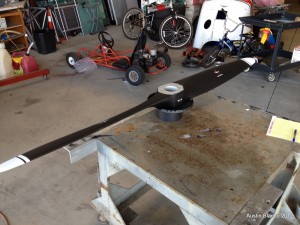
When I picked up the new prop, I was able to tour the extensive shop they have, and as a die hard tool geek I loved seeing the special tools and processes required for working on propellers. While in the shop they had props from MU-2’s, King Airs, Cessna 150’s and a P-51. Wrenching on this variety of props didn’t seem to phase the engineers one bit. Prop work is a rare trade, I’ve been involved in rare trades enough to know that when someone makes work like this look easy, it’s because they are a master of the craft, which these guys and gals are. For those of you who are considering what shop to use for your prop inspection, you should seriously consider Sullivan.
Engines
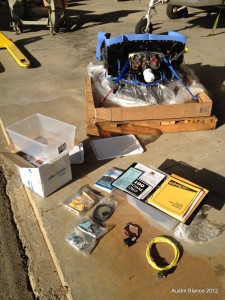
So the toughest choice was who to use for an engine shop. Any reader of aviation publications sees ads from all over the country for engines. You get everything from people promising really low costs to groups that anodize all of the parts and give the rebuilt engines special names, trying to up the perceived value of the engine. I wanted to find a shop that could rebuild and inspect the engine in a short period of time, do the job at a fair price, and produce a result that I could trust with my life and the lives of my friends and family. This was no small decision. I investigated nearly every engine shop in my region of the country. Some had extremely high prices, others were slow to respond in offering a quote. In the process I got in touch with the owner of a shop in Corona, CA. Ben O’Con of Corona Aircraft Engines sent me a quote for inspection, and 3 quotes for rebuild options within one day of my request. Now I’m fully aware that sending quotes is a pain. People want quotes fast, but when you send it, you have to honor it. So you’re motivated to fire it off, but you want to make sure and include every little part needed for the job. Miss the part on the quote, and you’ll usually eat the cost. What I found in the end was that Ben’s quotes were 100% accurate to the invoice price. A rare thing.
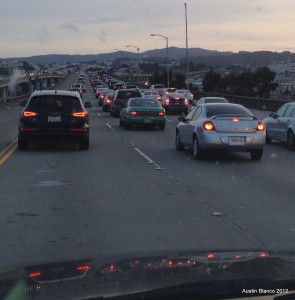
Waiting on the engine made me realize my love for aviation is also a heroin junkie level of addiction. I couldn’t stop thinking about being back up in the air. I couldn’t stop checking DUATS, Metars and doppler sites. I’d go to the airport and look at my forlorn engine-less airplane, oh the humanity! Of course I took all of this eagerness and used it to annoy Ben with questions, updates, options for enhancements and mods to the engine. Over time we agreed to add a graphical engine monitor from JPI, as well as a 160hp STC. I view both of these mods as investments. The JPI should, if I used it correctly, help me to avoid overheating my cylinders, as well as indicate problems with the cylinders before those problems become major. The 160hp mod should allow for better climb at altitude, and a little bit better cruise speed. I was getting antsy for this engine to show up…
Install Weekend
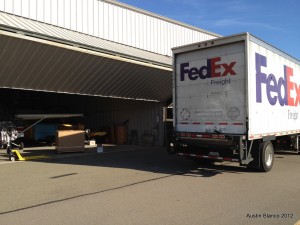
For the removal and re-installation of the engine, I opted to work with my friend, mentor and uber-mechanic, Larrie Ricca. I’m a wrench turner and I love working on machines. Larrie allows me to work on my plane as much as legally possible, while giving me highly experienced supervision and advice that can only be found in a career wrench-turner/DAR. He worked to get all of the small parts ready for the install, so that when the engine and prop arrived, all we’d need is elbow grease.
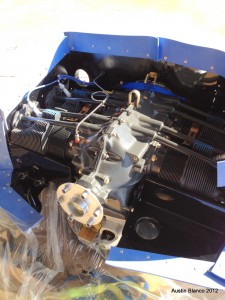
So Friday rolls around and in the afternoon I see what I’d been waiting for: A big crate from FedEx! We quickly remove the packaging and reveal a shiny engine, with everything painted, cleaned and not a leak in sight after it’s test run. All of the accessories were packed in clear plastic containers, and documentation was well organized and easy to go through. I didn’t think about it at the time, but having all of the small parts ready to go was a major time saver for the install. From the look of things, Corona had done a wonderful job. I couldn’t wait to get the thing fired up!
Friday night consisted of installing the EDM and oil cooler. No sense working around the engine if we could do the work with it already off the plane. We had already removed the carpet and panel cover in preparation for the EDM, so the install went relatively quickly. With the EDM on ships power, we called it a night.
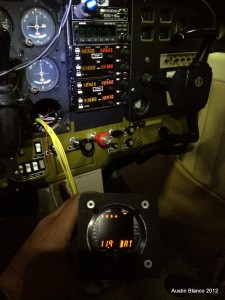
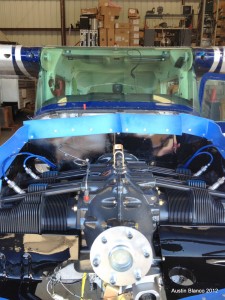
Saturday was a long one. About noon we were ready to hang the engine. Settling the engine into the new Lord mounts was a unique experience, and a great learning opportunity. It also marked a milestone in the rebuild. All we had left was wiring and hoses! Of course this “all we had” ended up taking a day and a half. Some parts needed to be fitted as I had opted for new items like the EDM and a vernier mixture control. A half hour here and there to fit parts really steals a lot of time away from the day. In the end, I was able to test run the engine by 5pm Sunday evening.
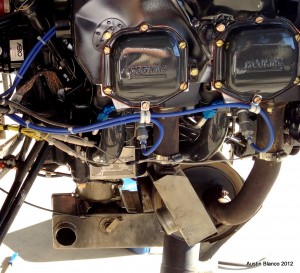
Monday was Larrie’s final inspection and paperwork. With his official blessing and return to service, I fired up the plane and took off for the initial test flight and 1.5hr cylinder burn-in. Orbiting over my home airport, being back up in the air, and knowing that I’d had a hand in the work, was a sublime experience. The weather was good, the air smooth, and…what? I was going 10kts faster than the old engine/prop! 10kts might not seem like a lot, but consider I fly about 29,000nm of distance per year. So if it takes me 10 minutes per flight less because I’m going 10kts faster, I’m saving 48 hours per year of time in travel. That’s effectively a work-week’s of time every year!
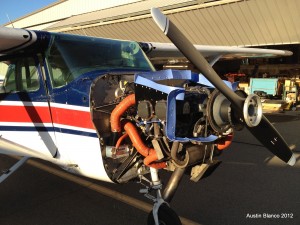
What started as a winter flight home turned into an opportunity to meet some of the amazing people and businesses that make flying possible. I remember back in the Marines they’d say that for every infantryman in combat, it takes seven other Marines to support him. I’ve learned that the same holds true for aviation. The ability to fly, which allows me to see my family at night while working far away, to increase my business potential for my employer, and to support the growth of needed medical research, wouldn’t be possible without this team of people working so hard. Thanks to Bill Arnold for your advice and professional work, to Dave Savoie from US Aviation Finance for shuffling the payments so quickly, to Brian and Samantha from Sullivan propeller, for your humor, advice and excellent service, to Ben O’Con for your exceptional work, and to Larrie Ricca, for your mentoring, guidance and craftsmanship. I’m so happy to have the opportunity to work with all of you, and I hope others get to benefit from your hard work as I have.
-Austin
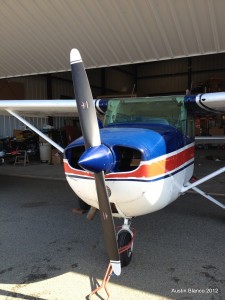
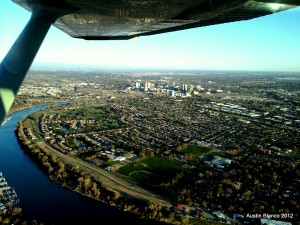
(Financial Disclaimer – I received no financial compensation for my writings about any of the businesses here, and write only as a happy customer who wants others to have the same results as I did.)
Comments
One response to “The journey of rebuilding an Airplane Engine”
Love the car traffic photo. I’m sure you had withdrawals each time you took to the road.